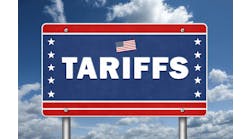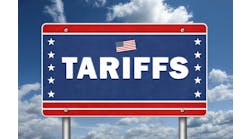Supply chain vulnerability analysis is needed to mitigate risk in supply chains, especially as chains go global, according to Jeff Karrenbauer, president and co-founder of INSIGHT, Inc., providers of supply chain planning services. Risks go beyond natural disasters and terrorism, he believes, and include political unrest, climate change, sudden demand changes, and misguided investments in technology.
Tensions between China and Japan, for example, are related to disputes in which both countries lay claim to a group of uninhabited fishing islands in the East China Sea. Bob Ferrari of The Ferrari Group, sees this manifesting in the supply chains of Japan’s automotive and consumer electronics supply chains. Many factories with Japanese brand interests were forced to close their China factories for several days this past fall as anti-Japanese protests caused a concern for production worker safety, he noted.
“The reminders of external supply chain risk come in many dimensions and now there is a concrete example of political tension between countries as evidence,” Ferrari said recently.
Up for considerable debate is the effect of environmental conditions. For example, 70% of companies surveyed by the Carbon Disclosure Project and Accenture believe that climate change will significantly affect their company revenues because it presents a physical risk to their operations. Some believe climate change presents risks associated with extreme weather and can have adverse effects on company operations.
Another cause of supply chain disruption can be poorly chosen technology. Historic examples that led to lost revenues, bankruptcy and temporary injury to their reputations include:
· Foxmeyer Drug, which filed bankruptcy after new order management and distribution systems didn’t work and fulfillment cost targets were unattainable;
· General Motors Corp., which invested billions in robot technology that did not work;
· Online grocer, Web Van, which invested in automated warehouses that drained capital, causing the company to file bankruptcy within months;
· Hershey Foods’ order management and warehouse implementation issues which caused Halloween shipments to be delayed; the company lost $150 million in revenue;
· Cisco, which, without a visibility program in place, was stuck with inventory as demand slowed, resulting in a $2.2 billion inventory write-off;
· Aris Isotoner, a division of Sara Lee, which moved production from Manila to even lower-cost countries; sales decreased 50 percent and the unit was sold to Totes.
According to a recent survey by Deloitte, “53 percent of the 600 executives that participated said that supply chain disruptions have become more costly over the last three years, and 48 percent said that such events had become more frequent during that period. “Margin erosion” was cited by 53 percent of respondents as one of the two most costly byproducts of supply chain disruptions. That was followed by “sudden demand change,” cited by 40 percent. The latter problem reflected supply chain challenges associated with growing customer expectations, short product cycles, and emerging competitive challenges.”
Supply chain design should be a continuous process, INSIGHT suggests, and a set of “what-if” contingencies should be developed to mitigate both risk and consequences.




